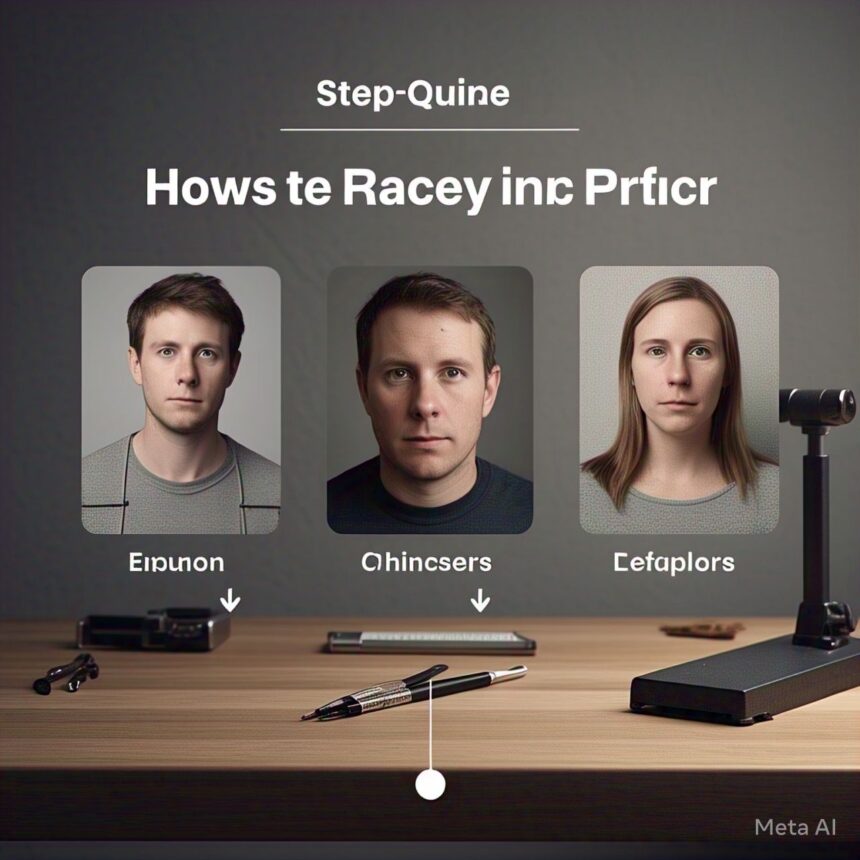In today’s digital age, photo editing has become more accessible than ever. Whether you’re looking to create a funny meme, fix an awkward group photo, or experiment with creative photo manipulation, the ability to change a face in a photo is no longer reserved for professional designers. With the right tools and techniques, anyone can achieve seamless results in just a few steps.
In this blog post, we’ll explore the basics of changing a face in a photo, discuss the tools you can use, and share some tips to ensure your edits look natural and polished.
Why Change a Face in a Photo?
Before diving into the how, let’s talk about the why. There are plenty of reasons people want to make face swap or edit faces in photos:
- Fixing Group Shots: Ever taken a group photo where someone blinked or looked away? Swapping their face with one from another shot can save the day.
- Creative Fun: Want to see how you’d look as your favorite celebrity or swap faces with a friend for laughs? Face-swapping can be a fun way to unleash your creativity.
- Professional Editing: Photographers and designers often use face-swapping techniques to enhance portraits or create composite images for marketing and advertising.
Tools for Changing Faces in Photos
Thanks to advancements in technology, there are countless tools available for face-swapping. Here are some of the most popular options:
- Face Swap Apps
For those looking for quick and easy edits, face swap apps like FaceApp, Reface, or Snapchat offer user-friendly interfaces. These apps use AI to automatically detect and replace faces in photos or videos.
- AI-Powered Online Face Swap Tools
AI-powered tools like MioCreate or Vidqu AI take face-swapping to the next level by using machine learning to create hyper-realistic results. These tools are ideal for advanced projects but may require some familiarity with AI-based editing.
Step-by-Step Guide to Changing Faces
Here’s a general process for swapping faces in photos using most editing tools:
Step 1: Choose Your Photos
Select two photos—one with the original face and one with the replacement face. Ensure both images have similar angles, lighting, and resolution for the best results.
Step 2: Extract the Face
Use selection tools (like Photoshop’s Lasso Tool) or AI-based features in apps to isolate the face you want to swap. Be precise to include key facial features like eyes, nose, and mouth while avoiding unnecessary background.
Step 3: Place the New Face
Position the new face over the original image. Resize and rotate it as needed to align it perfectly with the original face’s position.
Step 4: Blend and Adjust
This is where the magic happens! Use blending tools to match skin tones and lighting between the two images. Adjust brightness, contrast, and saturation levels to make the edit seamless.
Step 5: Final Touches
Zoom in to refine edges and fix any inconsistencies. Remove any visible lines or mismatched areas for a polished result. Once satisfied, save your work!
Tips for a Natural-Looking Edit
- Match Lighting and Angles: The new face should have similar lighting conditions and angles as the original photo to avoid an unnatural look.
- Pay Attention to Skin Tone: Use color correction tools to ensure the skin tone of the swapped face matches the rest of the body.
- Don’t Overdo It: Subtlety is key! Over-editing can make your photo look unrealistic or uncanny.
- Practice Makes Perfect: Like any skill, mastering face-swapping takes practice. Experiment with different tools and techniques to improve over time.
Conclusion
Changing a face in a photo is easier than ever, thanks to modern editing tools and apps. Whether you’re fixing an image for personal use or diving into creative projects, mastering this skill opens up endless possibilities for photo manipulation. Just remember to approach it with care, creativity, and ethical responsibility.
So go ahead—grab your favorite editing tool and start experimenting! Who knows? You might just discover a hidden talent for photo editing along the way!






